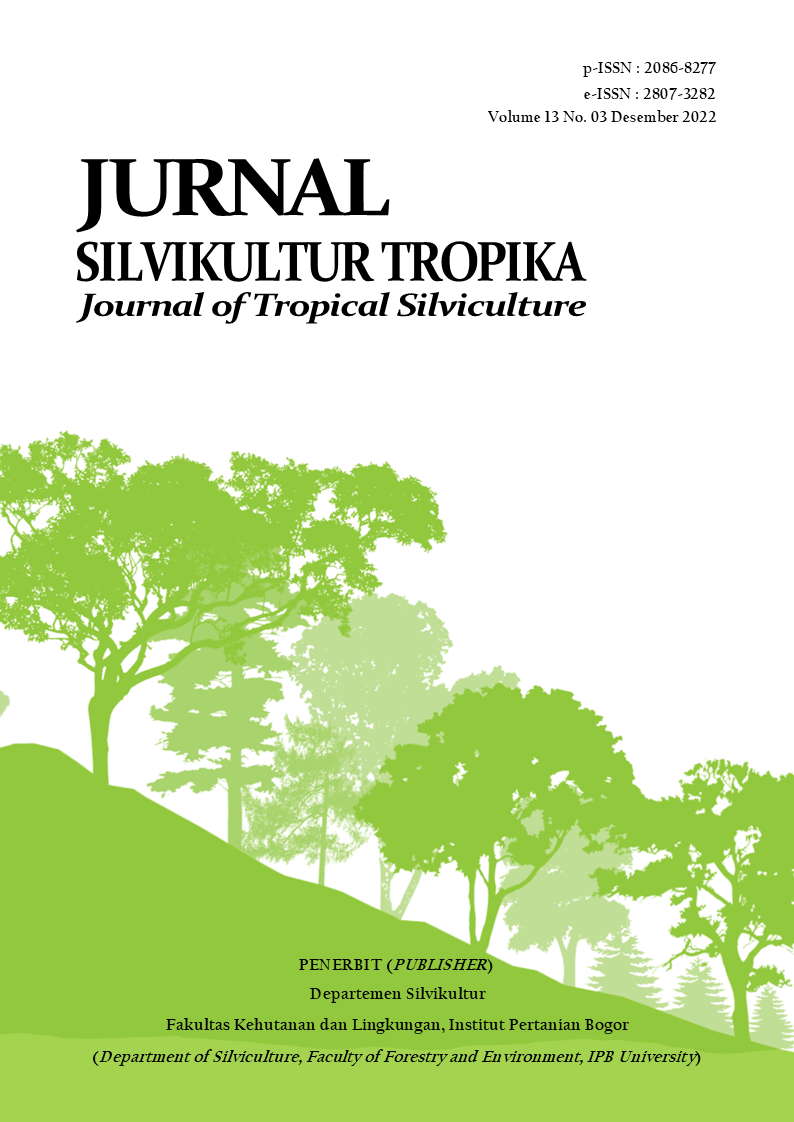Growth Analyses of Dipterocarpaceae Stand on Selective Cutting and Line Planting Silvicultural System with Different Planting Line Direction in North Kalimantan
Abstract
The potency of the Indonesian Tropical Forest, particularly in Kalimantan, has been shrinkage year by year. Selective Cutting and Line Planting System (SCLP) is expected to increase the productivity of the tropical forest. This study aims to analyze the growth and diameter increment of Dipterocarpaceae stand planted in West-East (W-E) and North-South (N-S) planting direction on SCLP at concession area of PT. Intracawood Manufacturing, Bulungan District, North Kalimantan, Indonesia. Growth and diameter increment data of Dipterocarpaceae was obtained by field measurement in 4 (four) permanent plots sized 100 m x 100 m with W-E and N-S directions. The study revealed that the largest growth and average diameter increment on a five-year-old stand is Shorea parvifolia with planting direction of W-E about 8,5 cm and 1,92 cm/yr. In contrast, the smallest is Dryobalanops lanceolata with N-S planting direction about 4,6 cm and 0,99 cm/yr. Planting line direction does not influence diameter increment. It is due to the stand position in the spacing line as an ex-cutting area or the right and left-hand sides of the planting line with low density and low average stand height (17,62 m). Therefore, the light intensity on the N-S planting line direction has no barrier of spacing line stand.
Keywords: Increment, Light Intensity, Planting Line Direction
Downloads
Copyright (c) 2022 M. Taufan Tirkaamiana, Lailan Syaufina, Jumani Jumani

This work is licensed under a Creative Commons Attribution 4.0 International License.










